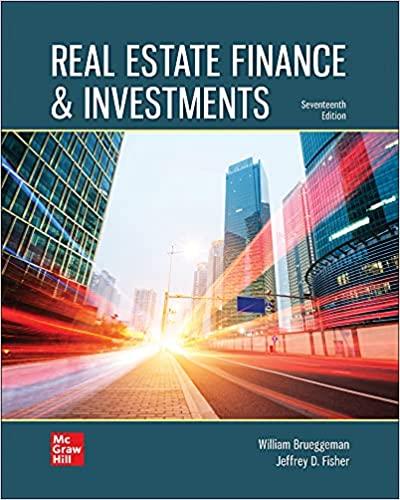Answered step by step
Verified Expert Solution
Question
1 Approved Answer
1 . What are the major purposes of margin analysis? 2 . When a company s operating profit does not meet their next cash flow,
What are the major purposes of margin analysis? When a companys operating profit does not meet their next cash flow, what can the company use as collateral to borrow more money? Please list as many items as possible from Balance Sheet. The stock price of ABC bank has fallen by on March There were rumors that the bank may have liquidity problems. The management of ABC bank strongly denied, and the top managers collectively bought $M of stocks the next day. The stock price went back up Explain why. Describe the difference between book value and market value. Explain which one is more important to financial manager and why. Assume you are interested in computing the enterprise value of a firm, or the total present value of a given investment. In this case, you typically use Free Cash Flows to the equity Firm. Why dont we include financial expenses there? State true or false: The value of a firm, for both its shareholders and debtholders, is the sum of discounted Free cash flows to equity FCFE Free Cash Flow to Equity using the returns of equity as a discount rate.
A firm has a PERPrice Earning Ratio of The riskless rate of return is The equity risk premium is and the firms beta is This means that the market is forecasting growth in earnings.
Discounting the FCFFree Cash Flow of the equity firm with the WACC Weighted Average Cost Capitaltakes the tax shield into account.
To evaluate a firms equity, it is always better to compute the discounted sum of FCFE, rather than computing the discounted sum of FCFF and subtract debt value.
Firms managers strive to maximize the current value per share of existing stock to please shareholders. MULTIPLE CHOICE : Which one of the following statements related to liquidity is correct?
A Liquid assets tend to earn a high rate of return.
B Liquid assets are valuable to a firm.
C Liquid assets are defined as assets that can be sold quickly regardless of the price obtained.
D Inventory is more liquid than accounts receivable because inventory is tangible
E Any asset that can be sold within the next year is considered liquid.
Shareholders' equity:
A increases in value anytime total assets increases.
B is equal to total assets plus total liabilities.
C decreases whenever new shares of stock are issued.
D includes longterm debt, preferred stock, and common stock.
E represents the residual value of a firm.
The higher the degree of financial leverage employed by a firm, the:
A higher the probability that the firm will encounter financial distress.
B lower the amount of debt incurred.
C less debt a firm has per dollar of total assets.
D higher the number of outstanding shares of stock.
E lower the balance in accounts payable.
You recently purchased a grocery store. At the time of the purchase, the store's market value equaled its book value. The purchase included the building, the fixtures, and the inventory. Which one of the following is most apt to cause the market value of this store to be lower than the book value?
A a sudden and unexpected increase in inflation
B the replacement of old inventory items with more desirable products
C improvements to the surrounding area by other store owners
D construction of a new restricted access highway located between the store and the surrounding residential areas
E addition of a stop light at the main entrance to the store's parking lot
Which one of these is most apt to be a fixed cost?
A raw materials
B manufacturing wages
C management bonuses
D office salaries
E shipping and freight
Which one of the following costs is most apt to be a fixed cost?
A production labor cost
B depreciation
C raw materials
D utilities
E sales commissions
Sue and Neal are twins. Sue invests $ at percent when she is years old. Neal invests $ at percent when he is years old. Both investments compound interest annually. Both Sue and Neal retire at age Which one of the following statements is correct assuming that neither Sue nor Neal has withdrawn any money from their accounts?
A Sue will have less money when she retires than Neal.
B Neal will earn more interest on interest than Sue.
C Neal will earn more compound interest than Sue.
D If both Sue and Neal wait to age to retire, then they will have equal amounts of savings.
E Sue will have more money than Neal as long as they retire at the same time.
Samantha opened a savings account this morning. Her money will earn percent interest, compounded annually. After five years, her savings account will be worth $ Assume she will not make any withdrawals. Given this, which one of the following statements is true?
A Samantha deposited more than $ this morning.
B The present value of Samantha's account is $
C Samantha could have deposited less money and still had $
Step by Step Solution
There are 3 Steps involved in it
Step: 1

Get Instant Access to Expert-Tailored Solutions
See step-by-step solutions with expert insights and AI powered tools for academic success
Step: 2

Step: 3

Ace Your Homework with AI
Get the answers you need in no time with our AI-driven, step-by-step assistance
Get Started


